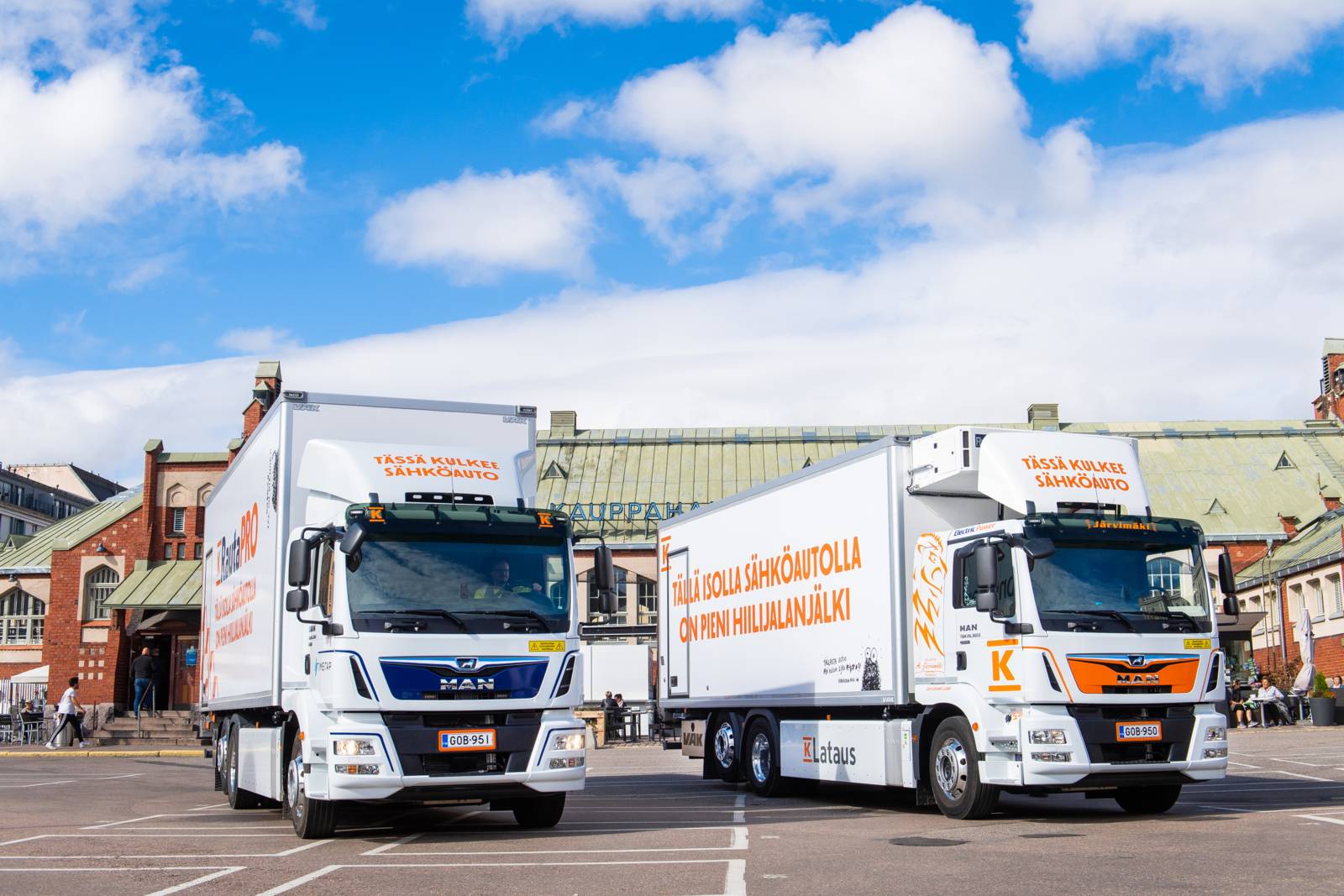
K Group begins deliveries with first series produced MAN fully electric trucks in Finland

One of the new fully electric trucks is used for transports in the grocery trade and the other one for transports to the K-Rauta chain and Onninen’s technical wholesale in the building and technical trade. Both trucks operate in the greater Helsinki region.
“Logistics accounts for some 30% of our total emissions, so obviously it plays an important role as we strive to achieve carbon neutrality. We want to boldly test out different ways to reduce emissions in logistics, which is why we are now piloting the use of fully electric trucks. These are the first trucks of this type in Finland, and one of them is also the first electric truck in the Nordic countries equipped with an electric refrigerating machine,” says Jyrki Tomminen, Supply Director at K Group’s grocery trade division.
“In an urban environment, fully electric trucks offer the added benefit of being very quiet. Electric vehicles effectively reduce noise in urban areas. The truck that transports products from Onninen and K-Rauta to construction sites operates from a terminal located next to the stores in Pasila, which enables more efficient transports with lower emissions in the greater Helsinki region,” says Olli Pere, Chain Director of K-Rauta Finland.
K Group aims to become carbon neutral by 2025
In spring 2020, K Group introduced updated, ambitious new emission reduction targets: K Group aims to become carbon neutral by 2025, with net zero own emissions by 2030.
In recent years, K Group has modernised its transport fleet with e.g. extra-long combination vehicles and an LNG combination vehicle. It is further reducing logistics emissions by centralising distribution, optimising routes, driving full loads, and utilising efficient reverse logistics. Drivers are also given training in economical driving.